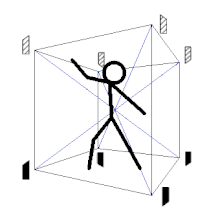Context, Text and Subtext

I Warm Up II Unit: The Text Theme: Context, Text, Subtex Introduction Context, text and subtext are all part of the same meaning making mechanism that allows the actor to justify his/her choices. In the case of Embodied Movement, these three concepts makes the delivery of expression more grounded, authentic and convincing for the actor and those witnessing. III Main Lesson CONCEPTS Context, Text, and Subtext Context Often when we think of context, we think of things like the date a work was published, who it was written by, or the climate of the time. But context is very important within your fictive universe as well. Context in this sense is all the grounding and guiding information that the audience needs, such as who the characters are, where they are, what time of day it is, etc. Context can also be any other additional information the audience needs to interpret and accurately understand what is happening...

